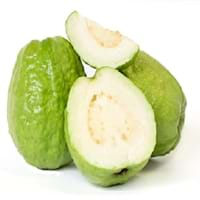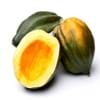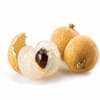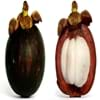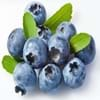Health Benefits
Good for diabetics, Improves well-being, Miraculin/miracle fruit makes sour things taste sweet
Cancer prevention, Diarrhea treatment, Prevents constipation, Scurvy treatment, Treatment of dysentary
General Benefits
Has taste modifying effect
Controls blood pressure, Cures cough, Improves eye vision, Maintains healthy cholesterol level, Treatment of common cold
Skin Benefits
NA
Anti-aging benefits, Brightens and lightens complexion, Hydrates skin, Treatment of skin diseases
Hair Benefits
NA
Prevents hair loss
Allergy Symptoms
Itching, Skin rash
Breathing difficulty, Coughing, Runny nose, Sneezing, Swelling of mouth, tongue or lips, Wheezing
Side Effects
Changes taste of food eaten after this fruit, Coagulation
Hair thinning, Nail thinning, Skin problems, Tooth decay, Weakness, Possibly unsafe during pregnancy
Best Time to Eat
As a snack in the late afternoon, Eat the fresh ones, avoid mixing with any other foods, don't eat after meal., Morning time (before lunch)
As a snack in the late afternoon, Don't consume at night and before bed, Eat the fresh ones, avoid mixing with any other foods, don't eat after meal., Morning time (before lunch)
Protein to Carb Ratio
Not Available
Vitamin A (Retinol)
Not Available
Vitamin B1 (Thiamin)
Not Available
Vitamin B2 (Riboflavin)
Not Available
Vitamin B3 (Niacin)
Not Available
Vitamin B5 (Pantothenic Acid)
Not Available
Vitamin B6 (Pyridoxin)
Not Available
Vitamin B9 (Folic acid)
Not Available
Vitamin C (Ascorbic Acid)
Vitamin K (Phyllochinone)
Not Available
Lutein+Zeaxanthin
Not Available
Water Content
Not Available
Calories in Fresh Fruit with Peel
Not Available
Calories in Fresh Fruit without Peel
Not Available
Not Available
Calories in Frozen Form
Not Available
Not Available
Calories in Dried Form
Not Available
Calories in Canned Form
Not Available
Calories in Juice
Not Available
Calories in Jam
Not Available
Calories in Pie
Not Available
Type
Berry
Tree fruit, Tropical
Season
Monsoon
All seasons
Varieties
Gymnema Sylvestre and Thaumatococcus Daniellii
Lucknow 49, Allahabad Safeda, Chittidar, Harijha, Apple guava, Hafshi, Arka Mridula and Allahabad Surkha
Color
Dark red
Green, Pink, Yellow
Inside Color
Greyish-white
White
Taste
NA, Sweet
Sweet-Sour
Origin
West Africa
Central America, Mexico, South America
Soil Type
Well-drained
Loam, Rocky, Sandy
Climatic Conditions
Rainfall
Sunny
Facts about
- The name 'Miracle' because of the magical experience you get after eating it.
- When you have lemon after eating this fruit, it tastes sweet as if it is added with sugar.
- It is also used as natural sweetener.
- The black pigment in Guava leaves is used for textile applications.
- Guava leaves are used to make tea.
- Oils extracted from guava seeds are used in various cosmetics.
- Guava wood is used for decorative purposes.
Other Countries
NA
China, Indonesia, Mexico, Nigeria, Pakistan, Philippines, Thailand
Top Importer
Not Available
Canada
Top Exporter
United States of America
India
Botanical Name
Synsepalum Dulcificum
Psidium guajava
Synonym
Miracle Berry, Miraculous Berry and Sweet Berry
Not Available
Subkingdom
Tracheobionta
Tracheobionta
Division
NA
Magnoliophyta
Subclass
Asteridae
Rosidae
Family
Sapotaceae
Myrtaceae
Species
S. dulcificum
Psidium guajava
Generic Group
Not Available
Myrtle
Difference Between Miracle fruit and Guava
We might think that Miracle fruit and Guava are similar with respect to nutritional value and health benefits. But the nutrient content of both fruits is different. Miracle fruit and Guava Facts such as their taste, shape, color, and size are also distinct. The difference between Miracle fruit and Guava is explained here.
The amount of calories in 100 gm of fresh Miracle fruit and Guava with peel is Not Available and 68.00 kcal and the amount of calories without peel is Not Available and Not Available respectively. Thus, Miracle fruit and Guava belong to Low Calorie Fruits and Low Calorie Fruits category.These fruits might or might not differ with respect to their scientific classification. The order of Miracle fruit and Guava is Ericales and Myrtales respectively. Miracle fruit belongs to Sapotaceae family and Guava belongs to Myrtaceae family. Miracle fruit belongs to Synsepalum genus of S. dulcificum species and Guava belongs to Psidium genus of Psidium guajava species. Beings plants, both fruits belong to Plantae Kingdom.

